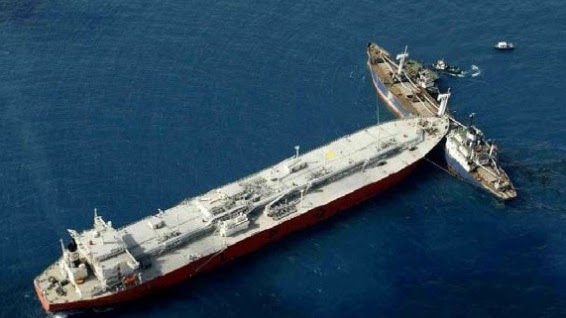Motivation
Maritime shipping is one of most efficient modes of transport today. With the growth in world trade, ship traffic in the world’s oceans has greatly increased over the past decades, making maritime safety increasingly challenging. Despite the considerable effort by the maritime authorities, safety is still a concern especially in heavy traffic areas. European Maritime Safety Agency (EMSA) has reported 20616 marine casualties and incidents worldwide from 2011 to 2017. Globally, the combination of collision (23.2%), contact (16.3%), and grounding/stranding (16.6%) shows that navigational casualties represent 53.1% of all casualties with ships. Furthermore, human error is found to be behind 75% of 15,000 marine liability insurance industry claims analyzed by Allianz Global Corporate & Specialty (AGCS).
Currently, several conflicts occur at the Singapore Strait every month. Among these conflicts, some have resulted in severe accidents that had large impact on the environment and resulted in loss of lives. Two such recent accidents are shown in Figure 1. The first image, from 2016, shows the impact on MSC Alexandra after it collided with a very large crude carrier Dream II, in Singapore strait, about 1.5 nm from Sebarok island. The second image, from 2019, shows the collision between a 57,000-tonne bulk carrier “Beks Halil” and a smaller bulk carrier while passing the Strait of Singapore. The Maritime and Port Authority (MPA) of Singapore had reported that the collision occurred about 3.4 km south of Sisters Islands. Such incidents question the efficacy of the current rules in place and demand research and analysis for improvement. Figures 1(a) and 1(b) show the vessel collisions around Singapore.
|
|
|
Motivated by the above, PSA marine and NUS embarked on this project titled ‘Vessel collision advisory system’. This project aims to develop an integrated simulation optimization approach for real time conflict/collision avoidance that considers both the dynamics and stochasticity of surrounding vessels. Specifically, a realistic agent-based model is developed based on behavioural learning in a real-environment and incorporated into a fast collision avoidance optimization algorithm in real time to provide robust collision avoidance that can account for future stochastic consequences of the actions taken.
System Framework
As the result of this project, Pilot Advisory System (PAS) was developed as an early warning system to enhance the situational awareness of vessel pilots and masters in heavy traffic regions and coastal waters (Figure 2). It leverages on the rich information transmitted through the Automatic Identification System (AIS) to analyse movement patterns of vessels and construct predictive and prescriptive capabilities.

The platform is composed of five main modules:
-
AIS Analytics:
-
Machine Learning
-
Agent-based Simulation
-
Collision Avoidance
-
Visualization
AIS Analytics
This module reads AIS data in common data file formats such as csc, xlsx, json, hdf, parquet, python pickle, … and preprocesses the data to be ready for machine learning. This module helps
-
To read and preprocess AIS data and prepare it for machine learning
-
To extract vessel movement features such as locations, journeys, passageways, and waypoints
-
To conduct statistical analysis on the movement features
-
To plan vessel movements based on real-time traffic forecast in port neighborhood
Displayed here in Fig 3 & 4 is the step of journey labelling. Based on the AIS data and other data sources, locations within the coastal water are identified and labelled. Using these location labels journeys between locations are identified and labelled.
|
|
|
Machine Learning
Leveraging on the rich information transmitted through the Automatic Identification System (AIS), movement patterns of vessels are analyzed to construct predictive models. This module helps in
-
Predictive modelling to obtain probabilistic measures on AIS signal noise identifications, location identification, destination prediction, passageway and waypoint prediction and vessel movement prediction
-
ML pipeline hyperparameter tuning
-
Automated deployment on the cloud
Agent-Based Modelling
Predictive models generate probabilistic measures for possible movement directions of the vessel. The agent-based model simulates the resulting stochastic environment and calculates measures such as conflict or collision risk, movement distance and time. This module helps in
-
Vessel motion simulation and trajectory prediction
-
Collision risk calculation
-
Risk hotspots identification
-
Close-encounter identification
Collision Avoidance
In case of a close-encounter situation discovered by the agent-based model, collision avoidance algorithm is triggered to find alternative safe routes to resolute the conflict with minimum risk and cost. Collision avoidance is in the form an autopilot which is trained and deployed for usage in three main steps
-
Simulation environment setup
-
Model training and deployment
-
Real-time collision avoidance and conflict resolution
Visualization
The entire project can be visualized through a web application. The front-end interface of the app is explained in the following video
PAS research team members: Dr Avinash Samvedi, Dr Sathishkumar, Dr Aghil Rezaei Somarin (former member) and Mr Jakkarin Sae-Tiew (former member).





